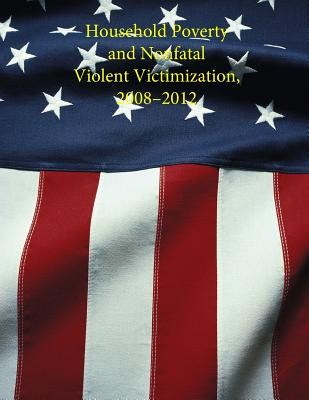
- We will send in 10–14 business days.
- Author: U S Department of Justice
- Publisher: CreateSpace Independent Publishing Platform
- Year: 2015
- Pages: 26
- ISBN-10: 1506083137
- ISBN-13: 9781506083131
- Format: 21.6 x 28 x 0.1 cm, minkšti viršeliai
- Language: English
- SAVE -10% with code: EXTRA
Household Poverty and Nonfatal Violent Victimization, 2008 - 2012 (e-book) (used book) | bookbook.eu
Reviews
Description
This report describes the relationship between nonfatal violent victimization and household poverty level as measured by the U.S. Department of Health and Human Services. Data are from the National Crime Victimization Survey. In 2008-12- Persons in poor households at or below the Federal Poverty Level (FPL) (39.8 per 1,000) had more than double the rate of violent victimization as persons in high-income households (16.9 per 1,000). Persons in poor households had a higher rate of violence involving a firearm (3.5 per 1,000) compared to persons above the FPL (0.8-2.5 per 1,000). The overall pattern of poor persons having the highest rates of violent victimization was consistent for both whites and blacks. However, the rate of violent victimization for Hispanics did not vary across poverty levels. Poor Hispanics (25 3 per 1,000) had lower rates of violence compared to poor whites (46.4 per 1,000) and poor blacks (43.4 per 1,000). Poor persons living in urban areas (43.9 per 1,000) had violent victimization rates similar to poor persons living in rural areas (38.8 per 1,000). Poor urban blacks (51.3 per 1,000) had rates of violence similar to poor urban whites (56.4 per 1,000). Violence against persons in poor (51%) and low-income (50%) households was more likely to be reported to police than violence against persons in mid- (43%) and high income(45%) households.
EXTRA 10 % discount with code: EXTRA
The promotion ends in 21d.16:59:03
The discount code is valid when purchasing from 10 €. Discounts do not stack.
- Author: U S Department of Justice
- Publisher: CreateSpace Independent Publishing Platform
- Year: 2015
- Pages: 26
- ISBN-10: 1506083137
- ISBN-13: 9781506083131
- Format: 21.6 x 28 x 0.1 cm, minkšti viršeliai
- Language: English English
This report describes the relationship between nonfatal violent victimization and household poverty level as measured by the U.S. Department of Health and Human Services. Data are from the National Crime Victimization Survey. In 2008-12- Persons in poor households at or below the Federal Poverty Level (FPL) (39.8 per 1,000) had more than double the rate of violent victimization as persons in high-income households (16.9 per 1,000). Persons in poor households had a higher rate of violence involving a firearm (3.5 per 1,000) compared to persons above the FPL (0.8-2.5 per 1,000). The overall pattern of poor persons having the highest rates of violent victimization was consistent for both whites and blacks. However, the rate of violent victimization for Hispanics did not vary across poverty levels. Poor Hispanics (25 3 per 1,000) had lower rates of violence compared to poor whites (46.4 per 1,000) and poor blacks (43.4 per 1,000). Poor persons living in urban areas (43.9 per 1,000) had violent victimization rates similar to poor persons living in rural areas (38.8 per 1,000). Poor urban blacks (51.3 per 1,000) had rates of violence similar to poor urban whites (56.4 per 1,000). Violence against persons in poor (51%) and low-income (50%) households was more likely to be reported to police than violence against persons in mid- (43%) and high income(45%) households.


Reviews